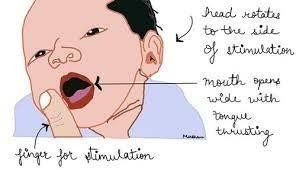A nurse is reinforcing teaching to transition from breastfeeding to whole milk with the parents of an infant. Which of the following months of age should the nurse recommend for transitioning the infant to whole milk?
8 months
10 months
6 months
12 months
The Correct Answer is D
Choice A rationale: Eight months is too early to transition to whole milk. At this age, infants still need the complete nutrition provided by breast milk or formula.
Choice B rationale: Ten months is still too early for transitioning to whole milk. Breast milk or formula should be the primary source of nutrition until around 12 months of age.
Choice C rationale: At 6 months of age, infants are usually just starting to introduce solid foods, but breast milk or formula remains the primary source of nutrition. Transitioning to whole milk at this age is not recommended.
Choice D rationale: The American Academy of Pediatrics (AAP) recommends transitioning from breast milk or formula to whole cow's milk at around 12 months of age. Before that age, breast milk or formula provides essential nutrients for the baby's growth and development.
Nursing Test Bank
Naxlex Comprehensive Predictor Exams
Related Questions
Correct Answer is A
Explanation
Choice A rationale: The rooting reflex is a natural reflex in newborns that helps them find the nipple for feeding. When the baby's cheek is touched or stroked, they will turn their head in that direction and open their mouth, searching for the breast or bottle.
Choice B rationale: The Babinski reflex is a different reflex, which involves the fanning and curling of the toes when the sole of the foot is stroked. It is not related to sucking or feeding.
Choice C rationale: The Moro reflex, also known as the startle reflex, occurs when a newborn is startled by a sudden noise or movement. The baby reacts by extending their arms and legs and then bringing them back toward the center of their body. It is not related to sucking or feeding.
Choice D rationale: The stepping reflex is observed when a newborn is held upright with their feet touching a solid surface. The baby will make stepping movements, but it is not related to sucking or feeding.

Correct Answer is ["B","C","E"]
Explanation
Choice A rationale: Keeping the newborn in the center of a large crib is not a specific calming strategy and may not offer the comfort and security that the baby needs.
Choice B rationale: Taking the newborn for a ride in the car can be a calming strategy for some babies. The gentle motion and humming sound of the car can help soothe the baby.
Choice C rationale: Carrying the newborn in a front or backpack can provide comfort and security to the baby. The closeness to the parent's body and the rhythmic movement can help calm the baby.
Choice D rationale: Allowing the newborn to continue crying until she falls asleep is not a recommended strategy. Responding to the baby's cries and providing comfort and soothing is essential for the baby's emotional well-being.
Choice E rationale: Swaddling the newborn in a receiving blanket can help mimic the feeling of being in the womb, providing comfort and security to the baby. It can also prevent the startle reflex and promote better sleep.
Whether you are a student looking to ace your exams or a practicing nurse seeking to enhance your expertise , our nursing education contents will empower you with the confidence and competence to make a difference in the lives of patients and become a respected leader in the healthcare field.
Visit Naxlex, invest in your future and unlock endless possibilities with our unparalleled nursing education contents today
Report Wrong Answer on the Current Question
Do you disagree with the answer? If yes, what is your expected answer? Explain.
Kindly be descriptive with the issue you are facing.
